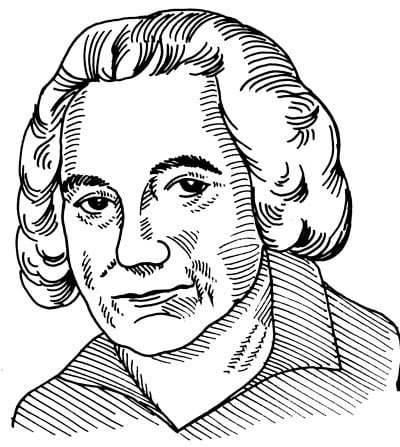
Joseph Priestley was born near Leeds in England on March 13, 1733.
Priestley had no real interest in the sciences. In fact, he never took a single formal science course during his entire lifetime.
This all changed when he met the one and only Benjamin Franklin, one of the most prominent scientists of the day, while on a trip to London in 1766.
Franklin awakened Priestley’s interest in science and they were to become lifelong friends. As a result of this encounter, Priestley began to dabble in the field of electricity.
In 1767 Priestley made his first major discovery—that graphite can conduct electricity.
He noticed that air floated over the fermenting grain in a bravery. He also noticed that this gas drifted to the ground around the vat, implying that it was more dense (heavier) than normal air. This gas would later be identified as carbon dioxide.
He devised a method to produce the gas back in his home laboratory. When the heavy gas, as he called it, was dissolved in water, he found that it had a very pleasant and tangy taste. For this invention of soda water, he was elected to the French Academy of Sciences in 1772 and received a medal from the Royal Society in 1773.
In 1772, Priestley made another important discovery. He had placed a shoot of a green plant into a container of water. He then covered the container and lit a candle in it until it completely burned out. Later, Priestley was able to both burn the candle again and keep mice alive in the air. Priestley became the first person ever to observe the respiration of plants—the fact that they take in carbon dioxide and release oxygen.
Priestley continued to experiment with gases. He devised a new apparatus that allowed him collect gases over mercury. Priestley floated various materials on top of the mercury and sealed a glass vessel over the top. He then heated the material with a magnifying glass.
This list of accomplishments would guarantee anyone a position in the history books, but Priestley did not stop there. He also isolated and described the properties of ammonia, sulphur dioxide, hydrogen sulphide, and carbon monoxide for the first time. Added to this long list is the decomposition of ammonia by electricity in 1781.
Yet, the discovery that he made on April 15, 1770 would prove to be the most useful to the common man. On this date Priestley discovered that India gum could be used to rub out lead pencil marks. Yes, he had invented the eraser and gave the material its common name—rubber.
